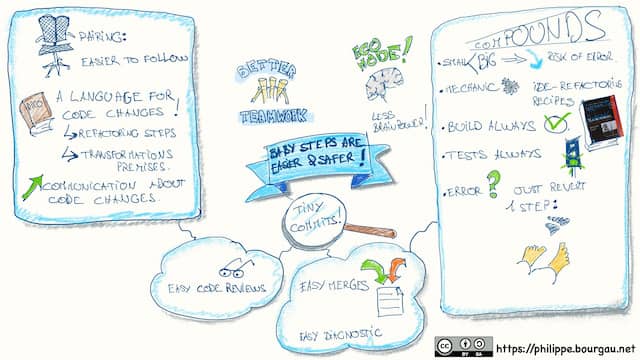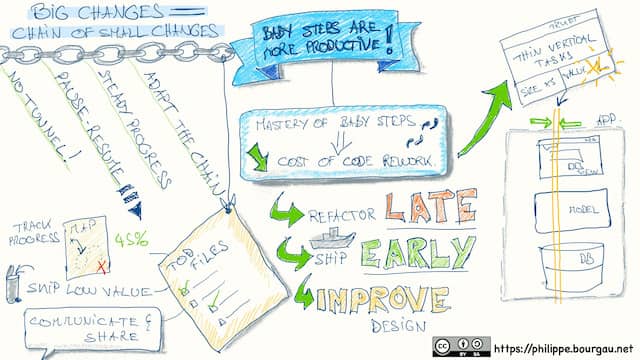How To Fix Bad Agile By Discussing Baby Steps
How to fix bad agile by starting neutral discussions about baby-steps programming. Baby steps are a sustainable and productive approach to writing code.

The average Scrum “installation” is not delivering what it could for the organization, and quite often making the lives of the people at the code face worse. I also believe that the practices and understanding of what was called XP can help developers with that, if only we could reach them.
It may be true that Scrum’s customers like Scrum. I believe that by and large, Scrum’s users quite often do not.
We may need to literally form a new “anti-Agile” community to support these ideas, abandoning the word “Agile” to the many ways it has been watered down and perverted.
As a technical Agile coach, working with a team that bad Scrum or Agile practices have hurt can be challenging. These negative experiences can lead to skepticism and resistance towards anything “agile” related. As a result, gaining their trust and engaging them in XP practices becomes challenging.
🤣 Regardless of what the SAD MF says, there is no need for training the resources since everything is readily available on the SAD website. Management probably also forgot possible training expenses in their YSVIBAICS. (Satiric Transition to Scale Agile DevOps Maturity Model. Check it out for a good laugh)
I’ve had my share of failures when working with teams that had been imposed an Agile-Method™. They were viewing all agile stuff, me included, as:
- At best: useless bureaucracy
- Or worst: a sneaky way to spy on them and ensure they remained busy and productive 100% of the time
Wouldn’t it be great if we had ways to connect with developers without mentioning Agile or Scrum?
What can we do?
Let’s talk about Baby Steps.

XP or TDD might be associated with traditional Agile and Scrum, which often leave a sour taste for the team. However, we can bridge the gap and rebuild trust by starting discussions around the Baby-Steps programming. By focusing on Baby Steps, you can introduce technical practices from a neutral point of view.
🤣 90% of Scrum or Agile implementations are crap! (My adaptation of Sturgeon’s Law to Agile)
Just highlight the practical benefits of small, manageable changes to the code:
- Baby steps allow developers to learn on the way, adjust, and steadily build new features.
- Baby steps make decisions reversible. Baby Steps save developers from being dragged by previous choices.
- Team members will regain a sense of control and autonomy over their work.
- With time, they will understand that Baby Steps also apply outside the codebase.
Baby Steps are not a rigid recipe! Instead, baby Steps are about continuous learning, adaptation, and delivery at a steady pace.

My experience at Devoxx
I recently had the opportunity to present a talk on Baby Steps at Devoxx Paris 2023. While preparing for the session, I searched for the most effective ways to pass a message through. I picked advice from How Minds Change and combined them with Liberating Structures. My goal was to create an interactive but also engaging session! The talk triggered a lot of exchanges and storytelling. (Note: Tell me if you want me to share more about this talk recipe in a new post). Here are some of the feedback I got:
Nice format that made the wide applicability of baby steps emerge
I liked the participatory format, which was original”
This approach could work with your team as well! It encourages active participation so that developers express their concerns, challenges, and aspirations.
After the talk, some people asked me how to take Baby Steps within their teams. Some even shared personal blockages about Baby Steps and sought advice. The fact that people are ready to share personal stories is a clue. “Listening and storytelling” is a powerful strategy to interest teams in Baby Steps!

What you can do
How to fix bad Agile?
Are you doing technical coaching with a team that bad Scrum or Agile has hurt? Try to talk and exchange about Baby Steps instead of trying to persuade them about Agile or Scrum.
Baby Steps are more ‘neutral’ and will make developers more open and receptive. Focus on the practical benefits of Baby Steps on continuous code improvement. In the long term, developers will transpose continuous improvement to teamwork and processes. That’s how they will finally overcome the negative connotations of traditional methodologies.

Feel free to use my sketch notes as visual support in your discussions.
Let’s embrace the power of small and incremental steps! Baby Steps can empower developers to work with confidence and clarity!
Here are other posts that might interest you:
- How to coach a team that has been burnt by bad TDD
- How to handle “TDD does not work in real life” during code katas
- A surprising way to teach evolutionary design
- How to make TCR evolutionary design practice sessions irresistible
- Make Testing Legacy Code Viral: Mikado Method and Test Data Builders
- Incremental Software Development Strategies for Large-Scale Refactoring #2 : Baby Steps




Leave a comment